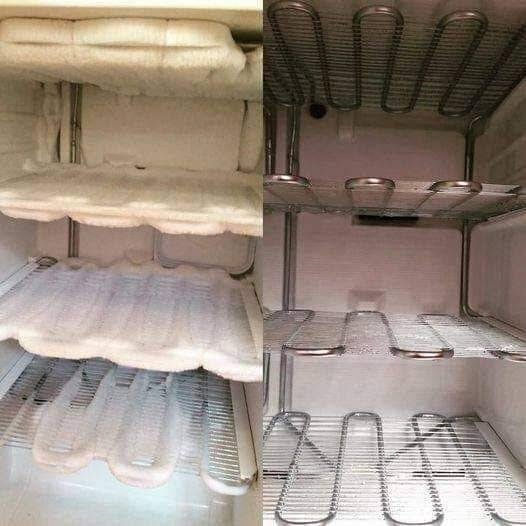Food Preservation: Excess frost can compromise food quality.
Economic Impacts: A mere 3mm frost layer can hike up energy usage by 30-40%. It’s wise to defrost once frost reaches 2-3mm.
Quick Defrost Steps
Safety First: Unplug the freezer or switch to standby mode.
Protect Your Foods: Transfer food to coolers or insulated bags to keep them frozen during defrosting.
Avoid Damage: Don’t use sharp tools to break the ice; this might damage the walls. Opt for a wooden or plastic spatula instead. Place a mop or towels to soak up the melting ice.
Melting the Frost:
Thin Frost Layer: Simply leave the door open for 24 hours after unplugging.
Quick Melt Method: Use a sponge soaked in hot water or a hot water spray bottle. As the frost softens, gently scrape it off.
Thicker Frost: Place a pan of boiling water inside the freezer (on a trivet) and shut the door for about 10 minutes. Once softened, remove the frost.
Post-Defrosting Care
Clean and Disinfect: Create a mix of three parts water, one part lemon juice, and one part white vinegar. Wipe down the freezer using this solution to kill bacteria and neutralize odors.
Attention to Accessories: Ensure you clean all freezer compartments.
Drying: Wipe it dry thoroughly. This step is crucial to prevent frost formation.
Seal Check: Examine the seals to make sure the freezer closes tightly.
Once done, plug your freezer back in. Regular defrosting not only enhances performance but also aids in energy conservation.
